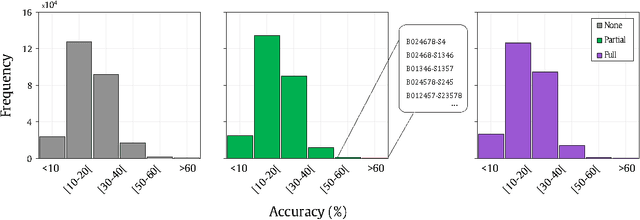Gisele H. B. Miranda
An optimized shape descriptor based on structural properties of networks
Nov 14, 2017



Abstract:The structural analysis of shape boundaries leads to the characterization of objects as well as to the understanding of shape properties. The literature on graphs and networks have contributed to the structural characterization of shapes with different theoretical approaches. We performed a study on the relationship between the shape architecture and the network topology constructed over the shape boundary. For that, we used a method for network modeling proposed in 2009. Firstly, together with curvature analysis, we evaluated the proposed approach for regular polygons. This way, it was possible to investigate how the network measurements vary according to some specific shape properties. Secondly, we evaluated the performance of the proposed shape descriptor in classification tasks for three datasets, accounting for both real-world and synthetic shapes. We demonstrated that not only degree related measurements are capable of distinguishing classes of objects. Yet, when using measurements that account for distinct properties of the network structure, the construction of the shape descriptor becomes more computationally efficient. Given the fact the network is dynamically constructed, the number of iterations can be reduced. The proposed approach accounts for a more robust set of structural measurements, that improved the discriminant power of the shape descriptors.
Authorship Attribution Based on Life-Like Network Automata
Oct 20, 2016



Abstract:The authorship attribution is a problem of considerable practical and technical interest. Several methods have been designed to infer the authorship of disputed documents in multiple contexts. While traditional statistical methods based solely on word counts and related measurements have provided a simple, yet effective solution in particular cases; they are prone to manipulation. Recently, texts have been successfully modeled as networks, where words are represented by nodes linked according to textual similarity measurements. Such models are useful to identify informative topological patterns for the authorship recognition task. However, there is no consensus on which measurements should be used. Thus, we proposed a novel method to characterize text networks, by considering both topological and dynamical aspects of networks. Using concepts and methods from cellular automata theory, we devised a strategy to grasp informative spatio-temporal patterns from this model. Our experiments revealed an outperformance over traditional analysis relying only on topological measurements. Remarkably, we have found a dependence of pre-processing steps (such as the lemmatization) on the obtained results, a feature that has mostly been disregarded in related works. The optimized results obtained here pave the way for a better characterization of textual networks.
 Add to Chrome
Add to Chrome Add to Firefox
Add to Firefox Add to Edge
Add to Edge